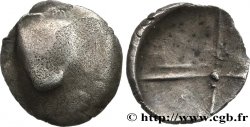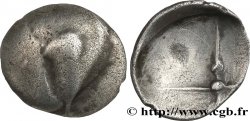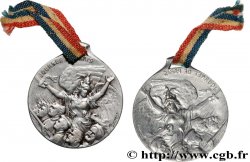bga_210193 - SALUVII Obole stylisée “au globule”
Not available.
Item sold on our e-shop
Price : 20.00 €
Item sold on our e-shop
Price : 20.00 €
Type : Obole stylisée “au globule”
Date: c. 150-50 AC.
Metal : silver
Diameter : 10 mm
Weight : 0,48 g.
Rarity : R1
Coments on the condition:
Flan un peu court et scyphate, avec un droit fruste mais un beau revers. Patine sombre et irisée
Catalogue references :
Obverse
Obverse legend : ANÉPIGRAPHE.
Obverse description : Lisse.
Reverse
Reverse description : Roue à quatre rayons avec moyeu central.
Commentary
Ce type, qui se rencontre sur l’oppidum de La Cloche, ne figure pas dans l’étude récapitulative de L. Chabot dans les Mélanges Colbert de Beaulieu, mais avait fait l’objet de publications multiples sous la plume d’Antonin Deroc.
Au revers, le globule sur le bras de la croix est bien net, légèrement plus petit que celui du moyeu central.
Au revers, le globule sur le bras de la croix est bien net, légèrement plus petit que celui du moyeu central.








 Report a mistake
Report a mistake Print the page
Print the page Share my selection
Share my selection Ask a question
Ask a question Consign / sell
Consign / sell
 Full data
Full data















